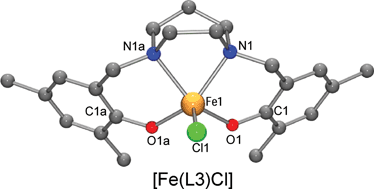Novel square pyramidal iron(iii) complexes of linear tetradentate bis(phenolate) ligands as structural and reactive models for intradiol-cleaving 3,4-PCD enzymes: Quinone formation vs. intradiol cleavage†
Abstract
The

* Corresponding authors
a
Centre for Bioinorganic Chemistry, School of Chemistry, Bharathidasan University, Tiruchirapalli, India
E-mail:
palanim51@yahoo.com, palaniandavarm@gmail.com
b Analytical Science Discipline, Central Salt and Marine Chemicals Research Institute, Bhavnagar, India
The

 Please wait while we load your content...
Something went wrong. Try again?
Please wait while we load your content...
Something went wrong. Try again?
R. Mayilmurugan, M. Sankaralingam, E. Suresh and M. Palaniandavar, Dalton Trans., 2010, 39, 9611 DOI: 10.1039/C0DT00171F
To request permission to reproduce material from this article, please go to the Copyright Clearance Center request page.
If you are an author contributing to an RSC publication, you do not need to request permission provided correct acknowledgement is given.
If you are the author of this article, you do not need to request permission to reproduce figures and diagrams provided correct acknowledgement is given. If you want to reproduce the whole article in a third-party publication (excluding your thesis/dissertation for which permission is not required) please go to the Copyright Clearance Center request page.
Read more about how to correctly acknowledge RSC content.
 Fetching data from CrossRef.
Fetching data from CrossRef.
This may take some time to load.
Loading related content
